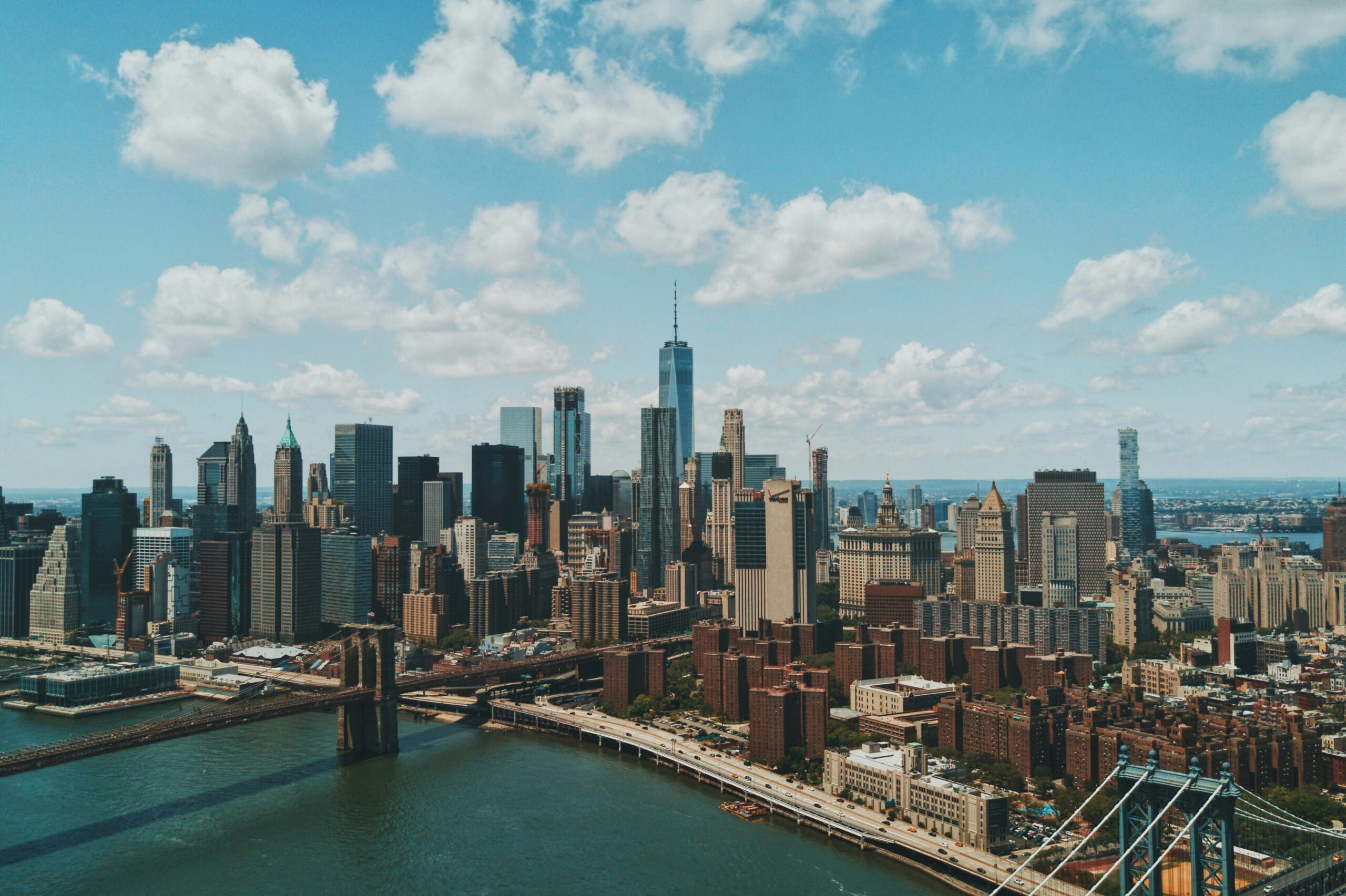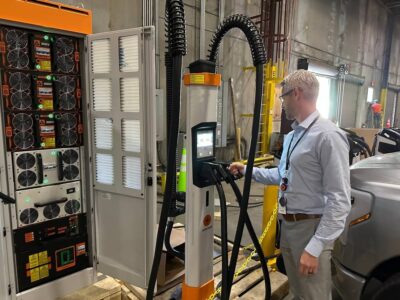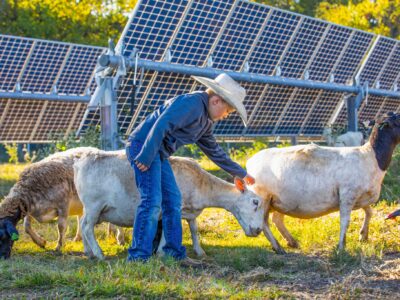(Bloomberg) —
The nature and geography of American innovation are in the midst of change. For the past half century, the most exciting areas for high-tech innovation involved breakthroughs in entirely new fields. Today, many of the most important apply new technologies like robotics, electrification and artificial intelligence to existing industries.
This is a major opportunity for regions that have been left behind by the historic tech dominance of just a few coastal cities. Regions in the middle of the US are well-positioned to revive their key manufacturing industries with new technologies.
A surge in venture capital has already enabled many more of these places to develop high-tech ecosystems. With help from the federal government, these places in the historical center of US manufacturing can develop a more holistic approach to economic policy, as I lay out in a new Heartland Forward report with my colleague Karen King.
- Read More: Where US Tech Investment Is Growing the Most
The part of the country that is most central to this shift and stands to benefit most is America’s Heartland, a vast region of 20 inland states.
The Heartland remains the nation’s center of gravity for manufacturing, despite a legacy of deindustrialization. It is home to more than half of US private-sector manufacturing employment, 6.5 million of America’s 12.8 million manufacturing workers. The region’s economic output in 2022 was $16.5 trillion, equivalent to the world’s third-largest economy, and its productivity was roughly 7.5% better than that of the nation as a whole.
Capitalize on Manufacturing Legacy
In the past, regions, states and nations followed one of two paths in the use of technology to power their overall economic growth. The first, called “shifting,” essentially pivots an economy away from incumbent industries like automobiles or steel in favor of the development of newer high-tech industries like semiconductors, computing and biotechnology.
Pioneered by the high-flying startups of Silicon Valley, shifting is also the path adopted by older US regions seeking to cope with the decline of legacy industries. Boston, for example, replaced textile and shoe manufacturing with high-tech industry in the post-war era. Pittsburgh turned to robotics, software and artificial intelligence after its steel and aluminum industries declined. This approach fostered an unbalanced and uneven growth model, with gains to innovation massively concentrated in a few tech hubs, while traditional manufacturing industries and older industrial regions experienced protracted deindustrialization.
The second path is “deepening,” the application of new technologies to incrementally improve the efficiencies of existing industries. This is the route that Germany, Japan and Korea took as they continuously upgraded their steel, auto, chemical, consumer electronics and related businesses.
Today, US regions have a unique opportunity to follow both approaches by linking their burgeoning startup ecosystems to incumbent manufacturers. Alongside the broader national effort to revive and upgrade US industrial capabilities, this can help to inform a more holistic model for growing tech economies — one that can restore America’s economic competitiveness, help rebuild older industrial regions and create more high-paying jobs.
Take the example of the car, which was once based on old-school technologies and is now at least as technologically challenging as a smartphone: It’s driven by software, connected to the cloud, powered by batteries, built in robotic factories and operated on sensor-laden roads and highways.
Much of that is still driven by the automotive sector, which has expanded southward from its old centers in the Great Lakes region. Sun Belt metros like Nashville and Knoxville, Tennessee; Birmingham and Huntsville, Alabama; Louisville and Bowling Green, Kentucky; and Jackson, Mississippi, have become critical nodes in the nation’s automotive cluster. Michigan, Tennessee, Kentucky, Alabama and Texas lead the nation in new investments in electric vehicle and battery manufacturing.
Leverage Research Universities and Scale Up College Towns
Many of the Heartland’s leading industrial clusters are close to major universities, which have capability in these crucial technologies. Universities and college towns are not just places for young people to get an education then migrate to careers elsewhere. They can act as talent magnets and anchors of the innovation economy. That’s how virtually every tech hub got its start.
In the Heartland, some college towns have capitalized on this opportunity, while many others simply act as “processing centers” for talent — they produce it, only to then export it to tech hubs and superstar cities on the coasts.
Consider the growth trajectories of four leading Heartland college towns: Austin, Texas; Columbus, Ohio; Ann Arbor, Michigan; and Champaign-Urbana, Illinois. In 1970, three of these metros – Austin, Ann Arbor and Champaign-Urbana – were relatively small. Only Columbus was home to more than a million people (1.2 million). Since then, their fortunes have diverged.
Austin’s population grew to more than a million by the mid-1990s, then nearly 2.3 million in 2020, an overall growth rate of almost 500%. Even though Columbus started out large, its population still exploded to 2.1 million people by 2020 — an overall growth rate of about 75%. But over the same period, Ann Arbor’s population rose to just 370,000 people, or almost 60%. It is still not the size that Austin was in 1970. Champaign-Urbana grew even more slowly, at a rate of about 25% over this period. Today, Austin and Columbus rank among the nation’s leading high-tech hubs, while Ann Arbor and Champaign-Urbana remain lovely college towns with fledgling startup ecosystems.
The benefits of college towns extend far beyond their borders, as their flywheels of innovation generate significant spillover growth. Palo Alto, California, and its hometown Stanford University fueled the entire San Francisco Bay Area’s evolution into the world’s leading high-tech complex. MIT and Harvard University powered the rise of greater Boston’s high-tech and biomedical complex. The growth of startups around Boulder, Colorado, and the University of Colorado eventually helped to shape Denver’s rise as a high-tech hub. Dozens of Heartland college towns have the potential to evolve into mini-Austins — bigger, more effective talent magnets and innovation catalysts.
The core capabilities needed for this economic transformation are already in place. The Heartland region has the advanced university research and technology; it is developing the high-tech startup ecosystems; and it is home to the required manufacturing infrastructure. What is needed is better mechanisms to capitalize on them.
Because these capabilities often span multiple cities and metropolitan areas and even states, the region should consider creating an overarching body — a Heartland Innovation Council — made up of the CEOs of large companies, venture capitalists and entrepreneurs, university presidents and the leaders of major philanthropies who can collaborate to better align its research and innovation capabilities with its leading industries and national policy priorities.
The Heartland can also benefit from the federal government’s Tech Hubs initiative, which provides funding to help bolster regional innovation clusters. For too long, America’s innovative capacity has been limited to breakthrough technologies. This has shaped an unbalanced growth model centered around increasingly expensive coastal tech hubs and a lagging middle. By forging a new model of industry-transforming innovation, the Heartland can help apply innovation to the rebuilding and reshoring of the manufacturing industries that are needed to secure the nation’s economic future.
(Corrects the map to exclude Montana from the Heartland states.)
To contact the author of this story:
Richard Florida in Toronto at florida@rotman.utoronto.ca
© 2024 Bloomberg L.P.





